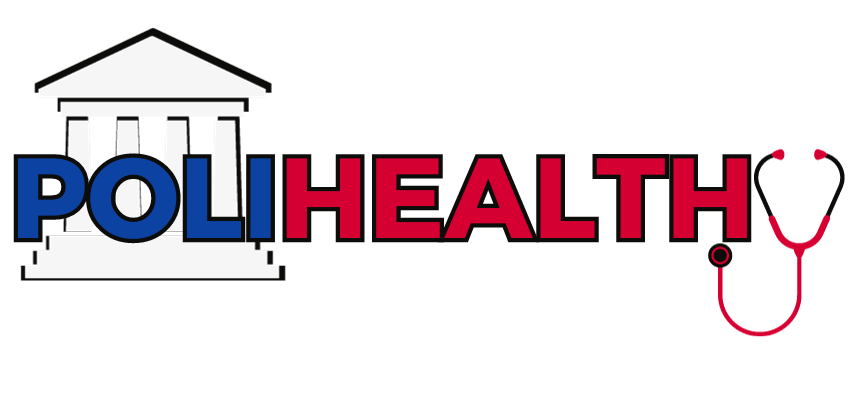5 Things to Consider when Shopping for the Best Health Insurance: A Step- by-Step Guide
Table of Contents
- 5 Things to Consider when Shopping for the Best Health Insurance: A Step- by-Step Guide
- 1. Understanding Your Needs
- 2. Clarifying Your Requirements & Maximizing Health Insurance Benefits
- 3.Compare Health Insurance Plans
- Pros and Cons of Health Insurance Plans
- Short Term and Catastrophic Insurance Plans
- Health Insurance Glossary: Understanding What Your Health Insurance Benefits
- Understanding How Health Insurances Work
- 4. Check the Provider Network
- 5. Read the Fine Print
- Conclusion: Things to Know When Choosing the Best Insurance Plan

Selecting the optimal health insurance plan can feel overwhelming, but it’s crucial for safeguarding both your well-being and your finances. Equally important is understanding the timing of your application to avoid missing any deadlines. Failure to do so could result in being uninsured for an entire year unless you meet the criteria for special enrollment.
Below are a few valuable pointers to kickstart your search for the best health insurance:
1. Understanding Your Needs
Before choosing the most optimal insurance plan, it is crucial to carefully evaluate your healthcare needs. This involves considering the specific services you need on a monthly basis, based on your unique health concerns.

For instance, if you have a chronic condition like high blood pressure or diabetes, it is likely that you will require regular medications and at least two doctor visits throughout the year. Additionally, take into account any specialists you may need to consult and your preferred hospitals for medical care.
By thoroughly assessing your health needs, you can make an informed decision on the most suitable insurance coverage.
2. Clarifying Your Requirements & Maximizing Health Insurance Benefits
After assessing your requirements, it’s time to narrow down your choices to find the optimal health insurance plan that suits you best.
Here are some tips to help you clarify your needs:
- Does the plan cover your prescription medications?
- Do you need to see a specialist? Does the plan cover specialists?
- Do you need mental health coverage? Does the plan cover mental health services?
- Are family planning services included in the plan? What precisely does it cover? The coverage can differ from one state to another.
3.Compare Health Insurance Plans
When it comes to selecting a health insurance plan, the multitude of options can be daunting. However, familiarizing yourself with key health insurance definitions can greatly simplify the process. Whether you turn to the marketplace website or explore a private health insurance exchange, understanding these definitions will empower you to make an informed decision that aligns with your specific needs.
Let’s dive into these definitions and find the best health insurance plan for you!
Types of Health Insurance Plans Explained
Health Maintenance Organization (HMO): With a HMO plan, you’ll have access to a network of doctors and hospitals that you must utilize in order to receive covered care. You will also need to choose a primary care physician (PCP) who will coordinate your care. HMO plans often have lower premiums than other types of plans, but they may also have more restrictions. Additionally, you will need a referral from your doctor for procedures or to see a specialist.
Preferred provider organization (PPO): PPO plans give you more flexibility in choosing your doctors and hospitals. You do not need to choose a PCP, and you can see out-of-network providers, but you will pay more for out-of-network care. With PPOs, there’s no requirement for a referral. PPO plans typically have higher premiums than HMO plans, but they offer more choices and flexibility.
Point-of-service (POS): POS plans are a hybrid of HMO and PPO plans. You typically have a smaller network of doctors and hospitals to choose from than with a PPO plan. However, you can see out-of-network providers for a higher cost. In addition, under POS plans, obtaining a referral is necessary for accessing specialist care or undergoing procedures. POS plans typically have lower premiums than PPO plans, but they offer less flexibility.
Exclusive provider organization (EPO): EPO plans are like HMO plans, but they have a smaller network of doctors and hospitals. You must use in-network providers to get covered care, and you will need to choose a PCP. Generally, no referrals are needed- but this is not always the case. Read the fine print in the benefits section to find out if you’ll need a referral. EPO plans typically have lower premiums than HMO plans, but they offer less flexibility.
Pros and Cons of Health Insurance Plans
| Plan Type | Description | Pros | Cons |
|---|---|---|---|
| HMO | Health maintenance organization | Lower premiums, smaller network of providers, need to choose a PCP. | Less flexibility in choosing providers, may have more restrictions on care. |
| PPO | Preferred provider organization | Higher premiums, larger network of providers, do not need to choose a PCP. | More flexibility in choosing providers, less restrictions on care. |
| POS | Point-of-service | Lower premiums than PPO, smaller network of providers than PPO, need to choose a PCP | Less flexibility than PPO, more restrictions than PPO |
| EPO | Exclusive provider organization | Lower premiums than HMO, smallest network of providers | Less flexibility than HMO, most restrictions on care |
| HDHP | High-deductible health plan | Lower premiums, higher deductibles, can be paired with an HSA | Higher out-of-pocket costs before insurance starts paying, need to save money in HSA to pay for medical expenses |
| Short-Term | Short-term health insurance plan | Less expensive than traditional plans, less coverage | Not available to everyone, may not cover pre-existing conditions |
| Catastrophic | Catastrophic health insurance plan | Lowest premiums, highest deductibles | Only designed to cover major medical expenses, not a good option for people with chronic health conditions |
Short Term and Catastrophic Insurance Plans
Short-term health insurance plans: Short-term health insurance plans are typically less expensive than traditional plans, but they also offer less coverage. They are typically designed for short-term use for people who are between jobs, traveling internationally, travelling out of state or who are waiting for a new health insurance to start. Short-term health insurance plans can be a good option for people who are unemployed briefly or who are waiting for a new health insurance plan to start.
Catastrophic health insurance plans: Catastrophic health insurance plans are only designed to cover major medical expenses, such as hospital stays and surgery. Catastrophic plans have the lowest premiums, but they also have the highest deductibles. These plans are a good option for young, healthy people who are willing to take on more financial risk and need to see a provider less than three times per year. For more details, it’s a good idea to learn more about catastrophic plans at the healtcare.gov website.
Health Insurance Glossary: Understanding What Your Health Insurance Benefits
Most health insurance benefit explanations are difficult to understand. One of the ways to better understand your benefits is understand the “lingo” or health insurance jargon used.

- Premium – The monthly amount you pay to your health insurance company to keep your coverage active.
- Copay- A fixed amount of money you pay for each covered medical service, such as a doctor’s visit or prescription drug.
- Co-Insurance– A percentage of the cost of a covered medical service that you pay after you’ve met your deductible. For example, if you have 20% co-insurance on a $100 doctor’s visit, you will pay $20.
- Deductible– The amount of money you have to pay out-of-pocket for covered medical services before your insurance starts paying.
- Out- of- Pocket Maximum– This means you’ll have to pay out-of-pocket for covered medical services in a year. Once you reach your out-of-pocket maximum, your insurance will pay 100% of the cost of covered services.
- Out of Pocket Cost – The total amount of money you pay for covered medical services in a year, including premiums, copays, co-insurance, and deductibles.
Understanding How Health Insurances Work
Let’s use this example below so that you understand the health insurance terms outlined previously and your financial responsibility.
Insurance Premium: $100 per month
Copay: $20 for a doctor’s visit
Co-insurance: 20%
Deductible: $1,000
Out-of-pocket maximum: $5,000
Let’s say you go to the doctor for a check-up, you will pay a $20 copay for the visit. If you get sick and need to go to the hospital, you will be responsible for paying a deductible of $1,000. Your insurance would then pay 80% of the cost of your care while in the hospital. However, you would be responsible for paying the remaining 20% (co-insurance) of the hospital.
Once you have paid $5,000 in premiums, copays, co-insurance, and deductibles, you have reached your out-of-pocket maximum.
For the rest of the year, your insurance company will pay 100% of the cost of covered services.
Consider these health insurance terms carefully, so that you have a good idea of how much you are expected to pay for services.
4. Check the Provider Network
You can check if your provider is “in-network” by visiting the insurance company’s website or by calling them. In -network providers refer to the network of doctors, specialists etc. that your insurance company has contracted with to provide services. Importantly, if you visit ‘out-of-network” providers, your out-of-pocket cost will be higher because no rates are agreed upon between your insurance and the “out of network” provider.
Preferred Providers and Choosing Your Health Insurance
If you have a preferred provider, it is best to call them to see if they accept the insurance before deciding which health insurance to choose. Keep in mind, if your preferred provider doesn’t accept the insurance, you will save by finding a new doctor or specialist that is an “in-network” provider.
If you must choose a new provider, pick a health insurance plan that offers a large network of providers, so that it’s easier to find care when you need it. This will help you narrow down your choice an choose the best health insurance for your needs.
5. Read the Fine Print
Before you enroll in any plan, be sure to read the fine print carefully. This will help you to understand the coverage details and any exclusions. To choose the best health insurance plan means that you have carefully compared all other options and satisfied with making a final decision. You will be “stuck” will this choice for a year, unless you meet special enrollment requirements, so take your time when choosing.
Read your plan’s summary of benefits and coverage (SBC). The SBC is a document that your insurance company is required to give you that explains the key features of the plan. After making your choice, you will be sent more detailed documents by mail or online. It will notify you of the services your plan covers in detail, what it doesn’t cover, and how much you are expected to pay for services.

Additionally, pay attention to the exclusions of service. Exclusions of service can vary from plan to plan, so it’s important to read the fine print carefully. For example, some plans cover family planning and abortion services, while some restrict certain services. Common exclusions of service include cosmetic surgery.
If you have any questions before making your final choice about a health insurance plan, ask your insurance company, HR rep or broker. Don’t be afraid to ask for explanation of the fine print, you may benefit in the long run, and avoid costly mistakes.
Conclusion: Things to Know When Choosing the Best Insurance Plan
If you’re eligible for employer-sponsored health insurance, this is often the best option. Employer-sponsored health insurance is typically less expensive than individual health insurance, and it may offer better coverage.
If you’re not eligible for employer-sponsored health insurance, you may be eligible for government-subsidized health insurance through the Health Insurance Marketplace.
The Health Insurance Marketplace offers a variety of health insurance plans from different insurance companies.
If you have a chronic health condition, you may want to consider a high-deductible health plan with a health savings account (HSA). HSAs allow you to save money on taxes, and you can use the money in your HSA to pay for deductibles, copays, and coinsurance.
Is a large network important? If you don’t have a preferred doctor, look for a plan with a large network so you have more choices.
Once you’ve compared plans and chosen one, be sure to enroll on time. The open enrollment period for health insurance typically runs from November 1 to January 15 each year. If you miss the open enrollment period, you may have to wait until the next year to enroll in a new plan, unless you qualify for a special enrollment period.
Choosing the best health insurance can be a complex process, but it’s important to remember that there are many resources available to help you make the best decision for you and your family.
Source
Healthcare.gov-Catastrophic Plans
Catastrophic health plans. (n.d.). HealthCare.gov. https://www.healthcare.gov/choose-a-plan/catastrophic-health-plans/#:~:text=What%20Catastrophic%20plans%20cover%201%20Catastrophic%20plans%20cover,visits%20per%20year%20before%20you%E2%80%99ve%20met%20your%20deductible.
The Health Insurance Marketplace
Open Enrollment ends Jan 16 – enroll now. (n.d.). HealthCare.gov. https://www.healthcare.gov/
Medical Disclaimer: This content is for informational and educational purposes only. It is not intended to for medical or financial advice. Individuals should consult with a licensed health professional if they have any health concerns. Please consult with your financial advisor to seek advice on financial assets.

